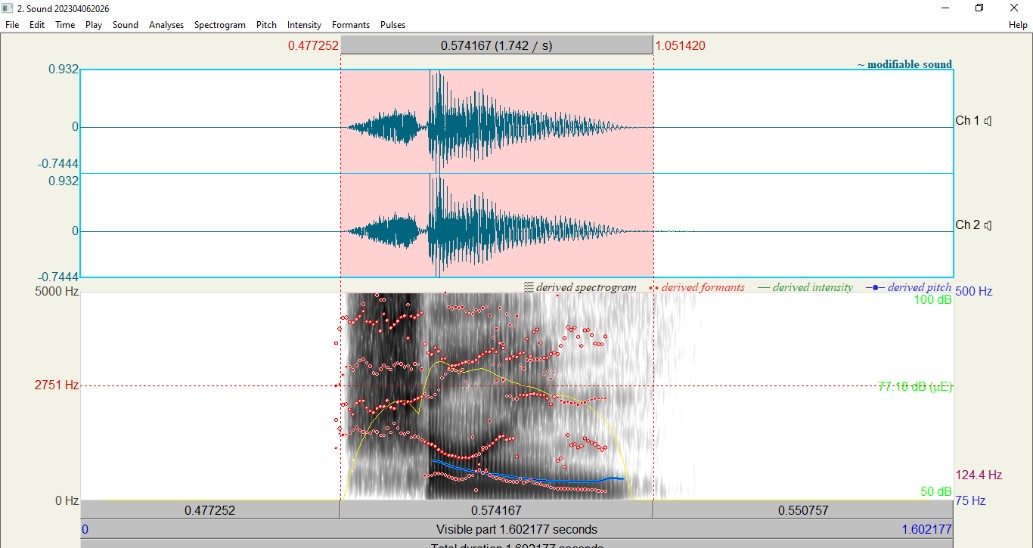The Analysis of Pronouncing Post-Alveolar Fricative Faced by the English Education Students of Tanjungpura University
DOI:
https://doi.org/10.21070/jees.v9i1.1794Keywords:
pronunciation, acoustic phonetic, post-alveolar fricativeAbstract
The objective of this research is to describe the percentage of post-alveolar fricative sound pronunciation acceptability among the English Language Education students in their sixth semester at the University of Tanjungpura. The scope of the study would be limited to the comparison of the first and second formants of the participants with those of the native speaker, whose formants were evaluated utilizing the PRAAT software. The data was gathered from a pronunciation performance test that was conducted via an audio recording procedure. The study involved a total of 15 participants who were categorized into three distinct ethnic groups, including Indonesian Tionghoa, Dayak, and Malay. Each participant pronouncing a set of 20 words, consisting of both voiceless and voiced post-alveolar fricatives. According to the findings of the study, 1) the percentage of voiceless post-alveolar fricative sounds that were considered ‘Acceptable’ was 40.5%, whereas the percentage of those that were considered ‘Not Acceptable’ was 59.5%., 2) the percentage of ‘Acceptable’ pronunciation of voiced post-alveolar fricative sounds was 42%, while the percentage of those that were ‘Not Acceptable’ was 58%. The inference that can be drawn is that students encounter challenges when attempting to articulate post-alveolar fricative sounds.
HIGHLIGHTS :
- The study revealed that 31% of students exhibited exceptional proficiency in voiceless post-alveolar fricative pronunciation, whereas 33% achieved excellence in voiced pronunciation. This indicates a diverse distribution of skill levels among students.
- The acceptable criteria for pronunciation show that pronunciations that fall within the excellent to fair categories are in agreement with the expectations of native speakers. The correct pronunciation was achieved in around 40.5% of cases for voiceless fricatives and 42% for voiced fricatives, indicating places where pronunciation was considered acceptable.
- A significant number of sixth-semester English Language Education students had obstacles in pronouncing post-alveolar fricatives. The study proposes the implementation of an appropriate educational setting, the development of phonetic learning awareness, and the investigation of curricular enhancements for addressing pronunciation difficulties.
Downloads
References
Komariah, A. (2019). Problems in Pronouncing the English Sounds Faced by the Students of SMPN 2 Halong, Banjar. Journal of English Language and Pedagogy, 1(2). https://doi.org/10.36597/jelp.v1i2.4127
Kothari, C. R. (2004). Research Methodology Methods and Techniques (2nd ed.). New Age International (P) Ltd., Publishers.
Puspita, P., Sudarsono, S., & Susilawati, E. (2017). Interference of Sambas Malay in Pronouncing English Consonant Sounds. Jurnal Pendidikan Dan Pembelajaran Untan, 6(5), 214991.
Rahmatunisa, W., & Syarifudin, S. (2021). The use of PRAAT in learning English debate in Indonesian EFL classroom. Indonesian EFL Journal (IEFLJ), 7(1), 43–50. https://doi.org/10.25134/ieflj.v7i1.3989
Silfiani, Arifin, Z., & Rezeki, Y. S. (2017). Teaching Pronunciation in Speaking Using Prosody Pyramid. Jurnal Pendidikan Dan Pembelajaran Untan, 6(10), 4.
Tabula, R. V., Suwanaroa, S., & Polerk, S. (2020). An Investigation of Factors Causing English Mispronunciation of Students in English for International Communication. International Journal of Linguistics, Literature and Translation, 3(11). https://doi.org/10.32996/ijllt.2020.3.11.19
Untoro, S., & Rustipa, K. (2020). Mispronunciation of English Fricatives and Affricates Produced by English Students of Stikubank University. Dinamika Bahasa Dan Budaya, 15(2), 62–70. https://doi.org/10.35315/bb.v15i2.8222
Wulandari, I., Rodliyah, I. N., & Fatimah, F. (2018). Using PRAAT for Analysing Segmental Features of Speech Produced by the Students of English Study Program of Universitas Brawijaya. ELTICS : Journal of English Language Teaching and English Linguistics, 3(1). https://doi.org/10.31316/eltics.v3i1.12

Published
How to Cite
Issue
Section
License
Copyright (c) 2024 Andra Sunata Pratama, Clarry Sada, Ikhsanudin Ikhsanudin

This work is licensed under a Creative Commons Attribution 4.0 International License.







